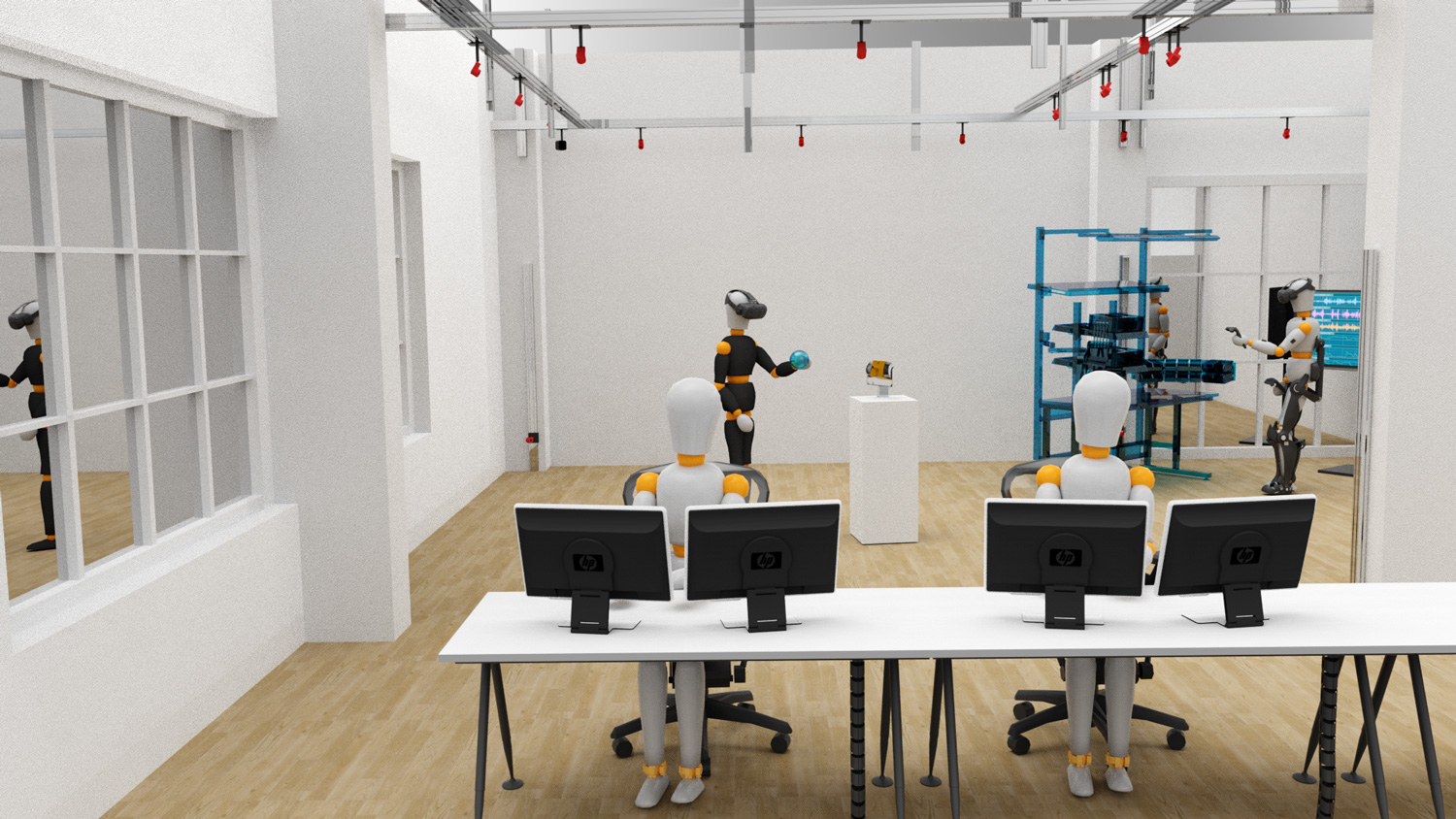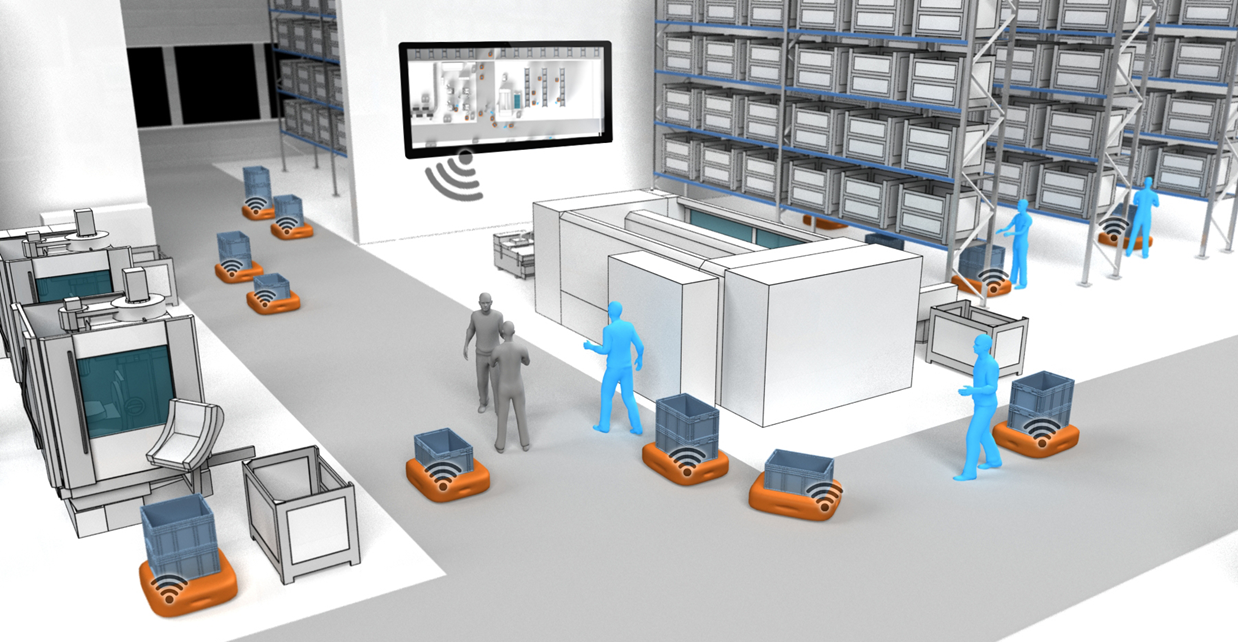Future of human-machine interaction: research group "3Dsensation" presents strategy paper to BMBF
How will humans and machines live together in the future – and what role will 3D technology play? These and similar questions are being addressed by the "3Dsensation" research alliance. At the annual members' meeting on November 10, the cooperation partners have now presented a strategy paper on the political promotion of human-machine interaction to the German Federal Ministry of Education and Research (BMBF). At the virtual meeting, new research laboratories in Erfurt, Chemnitz, Magdeburg, and Jena were also presented, and two 3D research projects were awarded the Innovation Prize for the first time.
Humans and machines are already close partners today. In industry and business, human and machine-assisted processes are already closely intertwined. But machines are also increasingly becoming part of everyday life in our private lives – for example in the form of smart homes, voice-controlled appliances or intelligent assistance systems in cars.
3D technology provides an essential basis for expanding the perspectives of interaction between humans, machines, and the environment. This is precisely the objective of the "3Dsensation" research alliance. Since 2013, the 82 involved partners in the alliance have been researching how to turn machines into competent partners and personalized assistants for humans. However, the focus of the joint project is not only on turning a research idea into a concrete project. It is also about establishing a community to promote research in the field of human-machine interaction, as Prof. Dr. Andreas Tünnermann, director of the Fraunhofer Institute for Applied Optics and Precision Engineering IOF, emphasized in his welcoming address to the general meeting. "3Dsensation" is part of the BMFRT program "Twenty20 – Partnership for Innovation" and is funded with 45 million by the German Federal Ministry of Research and Education.
Strategy paper presented to the BMFRT
The cooperation partners of "3Dsensation" have now recorded their know-how from seven years of research in a strategy paper This was presented to the BMFRT at the general meeting on November 10, 2020. The strategy paper is based on the four areas of demand in which the interaction between humans, machines, and the environment will be particularly relevant in the future and which thus represent the key areas of the work within the alliance: production, safety, mobility, and health. In these areas, machines will be increasingly integrated into processes and workflows in the future.
The research alliance identifies five explicit recommendations for action vis-à-vis the political authorities in its strategy paper: First and foremost, it is important to promote the training of the next generation of experts. Cross-disciplinary research and collaboration must also be supported. At the technical level, the development of multimodal sensor networks is just as much a priority as the far-reaching integration of sensor technology, robotics, and artificial intelligence into new technologies. Above all, the project partners of "3Dsensation" called for the promotion of scenarios for natural cooperation between humans and machines in everyday life. Machines need to be "let out of the cage", comments Prof. Dr. Gerd Litfin, chairman of the advisory board of the research alliance, in a contribution to the strategy paper. Instead of being banished to dark workrooms and production halls, he says, there needs to be an open-mindedness to dealing with machines in familiar and everyday living spaces as well.
New laboratories for further research
In order to promote the development in the field of 3D technology in the future, two new research infrastructures continued to be presented during the general meeting. These are based on the one hand on the joint project "Human-Machine-Interaction-Labs". A total of three new labs were created: The "Human-Centered-Design (HCD)-Lab" at TU Chemnitz focuses on the application of 3D technologies in the field of virtual and augmented reality. Meanwhile, the "Robo-Lab" at Otto-von-Guericke University in Magdeburg offers sufficient computing capacity for researching and testing artificial intelligence with a deep-learning computer. In the future, the "Teaching La" at Friedrich Schiller University in Jena will offer young scientists suitable space for the experimental replication of application scenarios.
In addition, a second research infrastructure was created with the "3DTech-Lab". This was set up by Fraunhofer IOF scientists at the Fraunhofer Project Center for Microelectronic and Optical Systems for Biomedicine MEOS in Erfurt. This research facility is also intended to provide scientists with a platform for testing newly developed systems for specific application scenarios.
Innovation Award 2020 for "FOLLOWme ILS" and "ROTATOR"
In addition to reports from the individual collaborative projects, the "3Dsensation Innovation Award 2020" was also presented for the first time at the event. This year, two projects were awarded: »FOLLOWme ILS« is a driverless transport system. "ROTATOR" is a three-dimensional out-of-stock detection system using robots, which enables mobile and autonomous detection of inventory in retail stores.
The winning projects receive professional marketing support, which helps to anchor the project result in the long term and to promote the transfer of research into practice.



